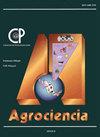墨西哥韦拉克鲁斯州中部地区兰科种果的探索性研究
IF 0.5
4区 农林科学
Q4 AGRICULTURE, MULTIDISCIPLINARY
引用次数: 0
摘要
对兰科植物果实的了解有助于对非花期品种的鉴定,并为兰科植物种子的体外萌发提供材料。他们的假设是,来自墨西哥韦拉克鲁斯州中部地区的兰花标本中,自然授粉的果实数量要多于没有自然授粉的果实数量。本工作的目的是:记录兰花的花期和结果期,对自然授粉和人工授粉的兰花果实进行特征描述。水果收集点位于Amatlán de los Reyes、Fortín和Tlaltetela市。该工作于2019年1月至2022年4月(39个月)进行。收集了成熟的兰花果实。形态测量通过记录体重(g)、长度(cm)和中心区域直径(cm)来测量,并辅以摄影记录。这些兰花的果实多样性在3月份被观察和采集。记录了42种及其果实,隶属8亚族32属。种数最多的属分别为:附着物属(epidendum)、假体属(prosthecheia)和石斛属(Oncidium),各有3种。有3种开花时间为11个月,分别是Platystele stenostachya、Specklinia digitale和S. tribuloides。小结实期和大结实期分别对应于斑点木和毛centrum streamineum。考虑到在所有三个研究地点中,与自然授粉相关的物种和果实数量最多(27种,113个果实),超过了人工授粉的物种数量(15种,51个果实),这可能表明在这些地点中,最大的偶发物种的生存环境仍然与它们的自然繁殖过程相适应。本文章由计算机程序翻译,如有差异,请以英文原文为准。
AN EXPLORATORY STUDY OF ORCHIDACEAE SPECIES FRUITS IN THE CENTRAL ZONE OF VERACRUZ STATE, MEXICO
The knowledge on Orchidaceae family fruits becomes useful in new studies, by helping to identify species that are not in flowering period and providing material for in vitro germination of orchid seeds. The hypothesis was that the number of orchid specimens with naturally pollinated fruits, from the central zone of the state of Veracruz, Mexico, would be more than the number of specimens that do not developed fruit naturally. The objectives of this work were: to record the flowering and fruiting periods, to characterize the orchid fruits pollinated naturally or manually. The fruit collection sites were located within the municipalities of Amatlán de los Reyes, Fortín and Tlaltetela. The work was performed between January 2019 and April 2022 (39 months). Ripe orchid fruits were collected. Morphometry was measured by recording weight (g), length (cm) and diameter of the central region (cm), complemented with a photographic record. The greatest fruit diversity of these orchids was observed and collected during the month of March. Forty-two species and their fruits were recorded, which were grouped into 8 subtribes and 32 genera. The genera with the highest number of species were: Epidendrum, Prosthechea and Oncidium, each with three species. Three species bloomed for 11 months: Platystele stenostachya, Specklinia digitale and S. tribuloides. The minor and major fruiting periods correspond to Specklinia digitale and Trichocentrum stramineum, respectively. Given the fact that in all three sites studied the greatest number of species and fruits is associated with natural pollination (27 species, 113 fruits), which exceeds the number of manually pollinated species (15 species, 51 fruits), it is possible to suggest that the largest contingent inhabits environments still compatible with the natural process of their reproduction in these sites.
求助全文
通过发布文献求助,成功后即可免费获取论文全文。
去求助
来源期刊

Agrociencia
农林科学-农业综合
CiteScore
0.50
自引率
33.30%
发文量
51
审稿时长
18-36 weeks
期刊介绍:
AGROCIENCIA is a scientific journal created and sponsored by the Colegio de Postgraduados. Its main objective is the publication and diffusion of agricultural, animal and forestry sciences research results from mexican and foreign scientists. All contributions are peer reviewed. Starting in the year 2000, AGROCIENCIA became a bimonthly and fully bilingual journal (Spanish and English versions in the same issue). Since 2007 appears every month and a half (eight issues per year). In addition to the printed issues, the full content is available in electronic format.
 求助内容:
求助内容: 应助结果提醒方式:
应助结果提醒方式:


